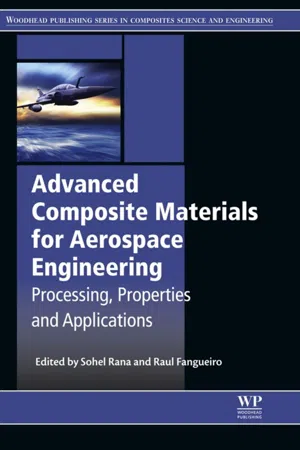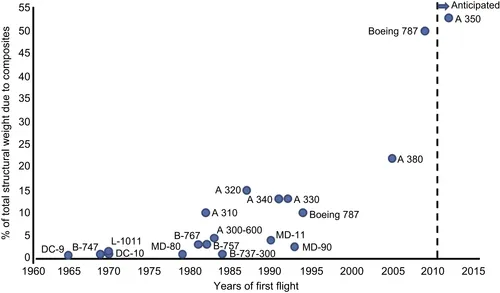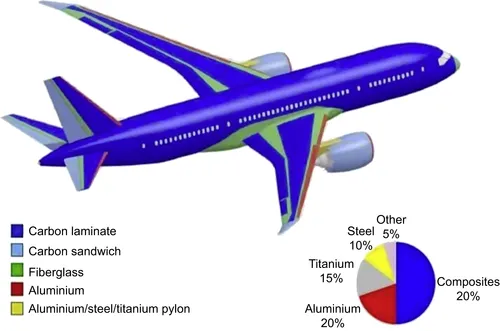
Advanced Composite Materials for Aerospace Engineering
Processing, Properties and Applications
- 496 pages
- English
- ePUB (mobile friendly)
- Available on iOS & Android
Advanced Composite Materials for Aerospace Engineering
Processing, Properties and Applications
About This Book
Advanced Composite Materials for Aerospace Engineering: Processing, Properties and Applications predominately focuses on the use of advanced composite materials in aerospace engineering. It discusses both the basic and advanced requirements of these materials for various applications in the aerospace sector, and includes discussions on all the main types of commercial composites that are reviewed and compared to those of metals.
Various aspects, including the type of fibre, matrix, structure, properties, modeling, and testing are considered, as well as mechanical and structural behavior, along with recent developments. There are several new types of composite materials that have huge potential for various applications in the aerospace sector, including nanocomposites, multiscale and auxetic composites, and self-sensing and self-healing composites, each of which is discussed in detail.
The book's main strength is its coverage of all aspects of the topics, including materials, design, processing, properties, modeling and applications for both existing commercial composites and those currently under research or development. Valuable case studies provide relevant examples of various product designs to enhance learning.
- Contains contributions from leading experts in the field
- Provides a comprehensive resource on the use of advanced composite materials in the aerospace industry
- Discusses both existing commercial composite materials and those currently under research or development
Frequently asked questions
Information
Advanced composites in aerospace engineering
Abstract
Keywords
Aerospace engineering; Composite materials; Fibre-reinforced polymer composites; Nanocomposites; Self-healing composites; Self-sensing composites1.1. Introduction and current scenario

| Boeing 777 | Boeing 787 Dreamliner |
| Launched in 2000 | Launched in 2007 |
| 11% FRPs | 50% FRPs |
| 70% Aluminium | 20% Aluminium |
| 7% Titanium | 15% Titanium |
| 11% Steel | 10% Steel |
| 1% Others | 5% Others |

Table of contents
- Cover image
- Title page
- Table of Contents
- Related titles
- Copyright
- Dedication
- List of contributors
- Woodhead Publishing Series in Composites Science and Engineering
- Editors' biographies
- Preface
- 1. Advanced composites in aerospace engineering
- 2. Advanced fibrous architectures for composites in aerospace engineering
- 3. Metal and ceramic matrix composites in aerospace engineering
- 4. Fibre-reinforced laminates in aerospace engineering
- 5. Sandwiched composites in aerospace engineering
- 6. Braided composites in aerospace engineering
- 7. Auxetic composites in aerospace engineering
- 8. Polymer nanocomposite: An advanced material for aerospace applications
- 9. Multiscale composites for aerospace engineering
- 10. Self-sensing structural composites in aerospace engineering
- 11. Self-healing composites for aerospace applications
- 12. Natural fibre and polymer matrix composites and their applications in aerospace engineering
- 13. Carbon–carbon composites in aerospace engineering
- 14. Product design for advanced composite materials in aerospace engineering
- 15. Quality control and testing methods for advanced composite materials in aerospace engineering
- 16. Conclusions and future trends
- Index